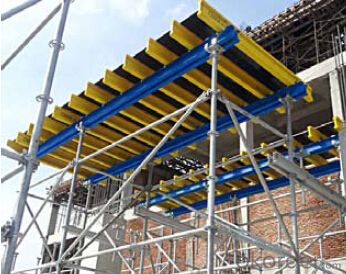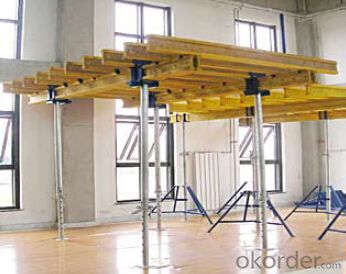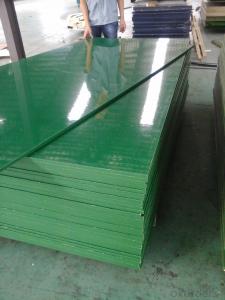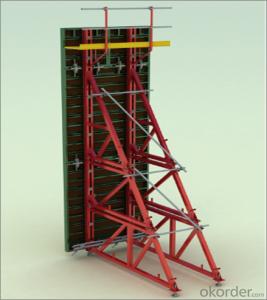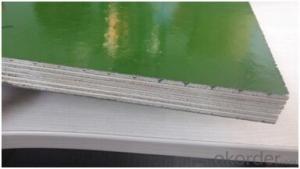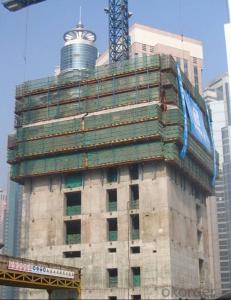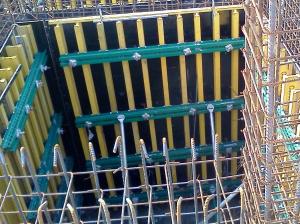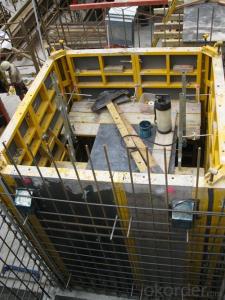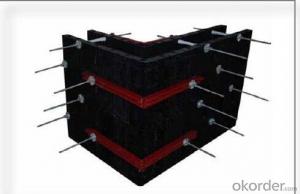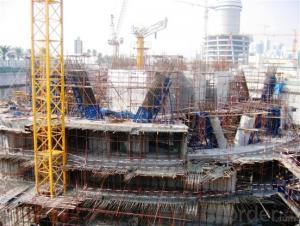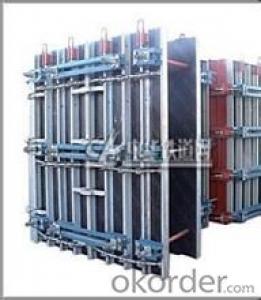Table formwork system for Build
- Loading Port:
- China Main Port
- Payment Terms:
- TT OR LC
- Min Order Qty:
- -
- Supply Capability:
- -
OKorder Service Pledge
OKorder Financial Service
You Might Also Like
Tabel Formwork:
Table formwork is the most typical application for slab, with timber beam, the slab formwork is
light weight, fast and economic in the construction.
Characteristics:
◆ Simple structure, easy assembly.
◆ Flexible structure, be adapted to different support system.
◆ High construction efficiency with special system tools.
1. Lifting fork for lifting the table formwork to upper floor.
2. Trolley for moving the table formwork on floor.
◆ Flexible application with stand alone props.
◆ Safer condition with handrails.
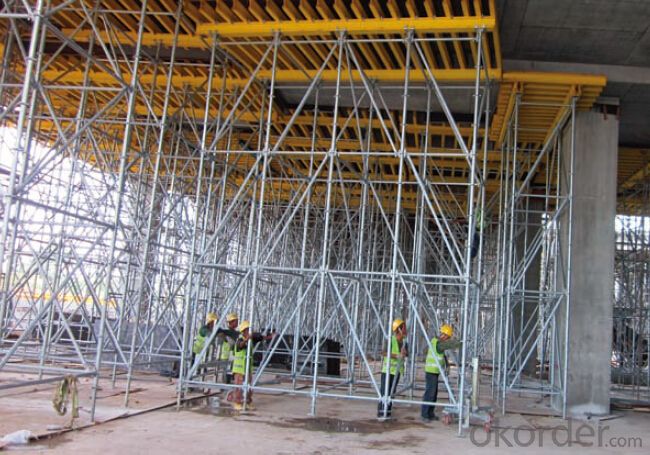
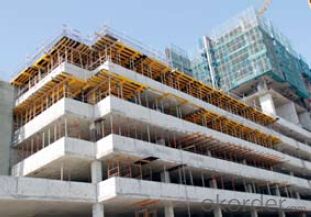
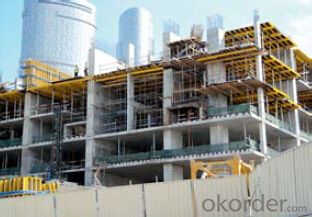
- Q: What are the cost implications of using steel frame formwork?
- The cost implications of using steel frame formwork can vary depending on several factors. Steel frame formwork is generally more expensive upfront compared to traditional timber formwork. However, it offers several advantages such as durability, reusability, and faster construction speed, which can offset the initial higher cost. Additionally, steel formwork requires less maintenance and has a longer lifespan, reducing overall costs in the long run. It also provides better structural integrity and accuracy, resulting in potential savings in material and labor costs. Ultimately, the cost implications of using steel frame formwork should be evaluated based on the specific project requirements, timeline, and budget.
- Q: How does steel frame formwork handle different types of concrete surface repair methods?
- The steel frame formwork system is highly versatile and durable, making it suitable for effectively managing various methods of repairing concrete surfaces. With its strength and stability, the steel frame formwork can withstand the pressures and forces exerted during the repair process. One commonly used method for repairing concrete surfaces is patching, which involves removing damaged or deteriorated areas of the concrete and replacing them with fresh concrete. The steel frame formwork is an excellent choice for this method because it provides a robust and stable support structure that holds the fresh concrete in place until it sets and hardens. By using the formwork, the patch is shaped and aligned correctly with the surrounding concrete, resulting in a seamless and uniform repair. Another method of repair is overlaying, where a new layer of concrete is applied over the existing surface to enhance its appearance, strength, or durability. Once again, the steel frame formwork is well-suited for this method as it can bear the weight and pressure exerted by the fresh concrete during the overlaying process. By utilizing the formwork, the new layer is evenly distributed and effectively bonded to the existing surface, resulting in a smooth and durable repair. Aside from patching and overlaying, the steel frame formwork can also handle other methods of repairing concrete surfaces such as grinding, polishing, and sealing. These techniques are commonly used to rectify minor surface imperfections or enhance the appearance and performance of the concrete. The steel frame formwork provides a stable and secure platform for these processes, enabling precise and controlled grinding, polishing, and sealing. Overall, the steel frame formwork system is reliable and efficient, capable of managing various methods of repairing concrete surfaces. Its strength, stability, and versatility make it an ideal choice for a range of repair applications, ensuring high-quality and long-lasting results.
- Q: What are the common safety precautions for using steel frame formwork systems in high-rise construction?
- Some common safety precautions for using steel frame formwork systems in high-rise construction include ensuring proper installation and bracing of the formwork to prevent collapse, conducting regular inspections for any signs of damage or deterioration, providing adequate fall protection measures for workers on elevated platforms, implementing proper lifting and handling techniques to prevent injuries, and following all relevant safety guidelines and regulations set by local authorities.
- Q: Does steel frame formwork require any special maintenance?
- Yes, steel frame formwork does require special maintenance. Regular cleaning to remove any concrete residue, rust prevention measures, and periodic inspections to identify and address any structural issues are necessary to ensure the longevity and optimal performance of steel frame formwork. Additionally, any damages or defects should be repaired promptly to avoid compromising the safety and effectiveness of the formwork system.
- Q: How does steel frame formwork ensure proper anchoring to the ground?
- Steel frame formwork ensures proper anchoring to the ground through several key features and techniques. Firstly, steel frame formwork is designed with sturdy steel frames that provide excellent stability and strength. These frames are securely anchored to the ground using a variety of methods such as steel stakes, ground anchors, or bolts. Additionally, steel frame formwork often includes adjustable legs or leveling screws, which allow for precise positioning and alignment on uneven ground surfaces. These adjustable elements ensure that the formwork is securely grounded and properly leveled, which is essential for achieving accurate and high-quality construction results. Moreover, steel frame formwork can also incorporate additional anchoring devices such as tie rods or braces, which further enhance its stability and resistance to external forces. These anchoring devices are strategically placed and secured to the ground, ensuring that the formwork remains firmly in place during the pouring and curing of concrete. Furthermore, steel frame formwork is often designed with integrated locking mechanisms or connection systems that provide a secure and rigid connection between individual formwork panels. This interlocking feature enhances the overall stability of the formwork system and prevents any lateral movement or displacement during the construction process. Overall, steel frame formwork is specifically engineered to ensure proper anchoring to the ground by combining robust steel frames, adjustable leveling mechanisms, anchoring devices, and interlocking systems. These features work in unison to provide a stable, secure, and reliable formwork system that can withstand the forces exerted during concrete pouring and curing, ultimately resulting in a structurally sound and well-built construction project.
- Q: How is steel frame formwork secured in place?
- Steel frame formwork is secured in place by using a combination of clamps, bolts, wedges, and braces to ensure stability and prevent movement during the concrete pouring process.
- Q: Are there any restrictions on the formwork height that can be achieved with steel frame formwork?
- Yes, there are restrictions on the formwork height that can be achieved with steel frame formwork. The maximum height is determined by factors such as the structural strength of the formwork system, the weight and pressure exerted by the concrete, and the stability of the structure during the pouring and curing process. It is important to adhere to the manufacturer's guidelines and engineering specifications to ensure the safe and effective use of steel frame formwork for varying heights.
- Q: How does steel frame formwork help in achieving accurate concrete alignment?
- Steel frame formwork is a construction technique that involves using steel frames to hold the concrete in place until it is hardened. This method is highly effective in achieving accurate concrete alignment due to several reasons. Firstly, steel frame formwork provides a strong and rigid structure that ensures the concrete is held in place securely during the pouring and setting process. The steel frames are designed to withstand the pressure and weight of the wet concrete, preventing any movement or deformation. This stability allows for the concrete to be poured with precision, resulting in accurate alignment. Secondly, steel frame formwork is adjustable and customizable. The frames can be easily adjusted and aligned to fit the desired shape and dimensions of the concrete structure. This flexibility enables construction workers to achieve accurate alignment, as they can make precise adjustments to ensure the formwork matches the intended design. Additionally, the use of steel frame formwork allows for tight joints and connections between different sections of the formwork. This tightness ensures that no gaps or spaces are present, preventing the concrete from leaking or flowing out of the desired alignment. The precise joints and connections also contribute to the overall accuracy of the concrete alignment. Furthermore, steel frame formwork provides a smooth surface for the concrete to be poured onto. The smoothness of the steel frames helps in achieving a uniform and level finish, as it reduces the likelihood of any irregularities or bumps on the surface. This smooth surface allows for the concrete to settle evenly, resulting in accurate alignment. In conclusion, steel frame formwork is an effective method for achieving accurate concrete alignment. Its strong and rigid structure, adjustability, tight joints, and smooth surface all contribute to ensuring precise alignment of the concrete. By using steel frame formwork, construction projects can achieve high levels of accuracy and quality in their concrete structures.
- Q: Can steel frame formwork be used for both monolithic and modular construction?
- Yes, steel frame formwork can be used for both monolithic and modular construction. Steel frame formwork provides a versatile and durable solution for constructing both types of structures. It can be easily adjusted and reused, making it suitable for both monolithic construction where concrete is poured in a continuous process, as well as modular construction where precast components are assembled.
- Q: How does steel frame formwork affect the overall sound insulation of a concrete structure?
- Steel frame formwork can have a significant impact on the overall sound insulation of a concrete structure. The use of steel frames in formwork construction can create a more rigid and stable structure compared to traditional wooden formwork. This increased rigidity helps to minimize vibrations and sound transmission through the structure. One of the main factors affecting sound insulation in a concrete structure is the transmission of airborne sound waves. The rigid steel frame formwork provides a more solid barrier for these sound waves, reducing their ability to pass through the structure. This can greatly enhance the sound insulation performance of the concrete structure. Furthermore, steel frame formwork can also contribute to the reduction of impact noise. Impact noise is created by vibrations transmitted through the structure due to activities such as footfall, moving objects, or machinery. The use of steel frames helps to minimize these vibrations, resulting in reduced impact noise transmission. It is important to note that while steel frame formwork can enhance sound insulation, other factors such as the thickness and density of the concrete, the presence of additional insulation materials, and the overall design and construction of the structure also play a significant role. Therefore, it is essential to consider a comprehensive approach to sound insulation in concrete structures, taking into account all relevant factors.
Send your message to us
Table formwork system for Build
- Loading Port:
- China Main Port
- Payment Terms:
- TT OR LC
- Min Order Qty:
- -
- Supply Capability:
- -
OKorder Service Pledge
OKorder Financial Service
Similar products
Hot products
Hot Searches
Related keywords


